old
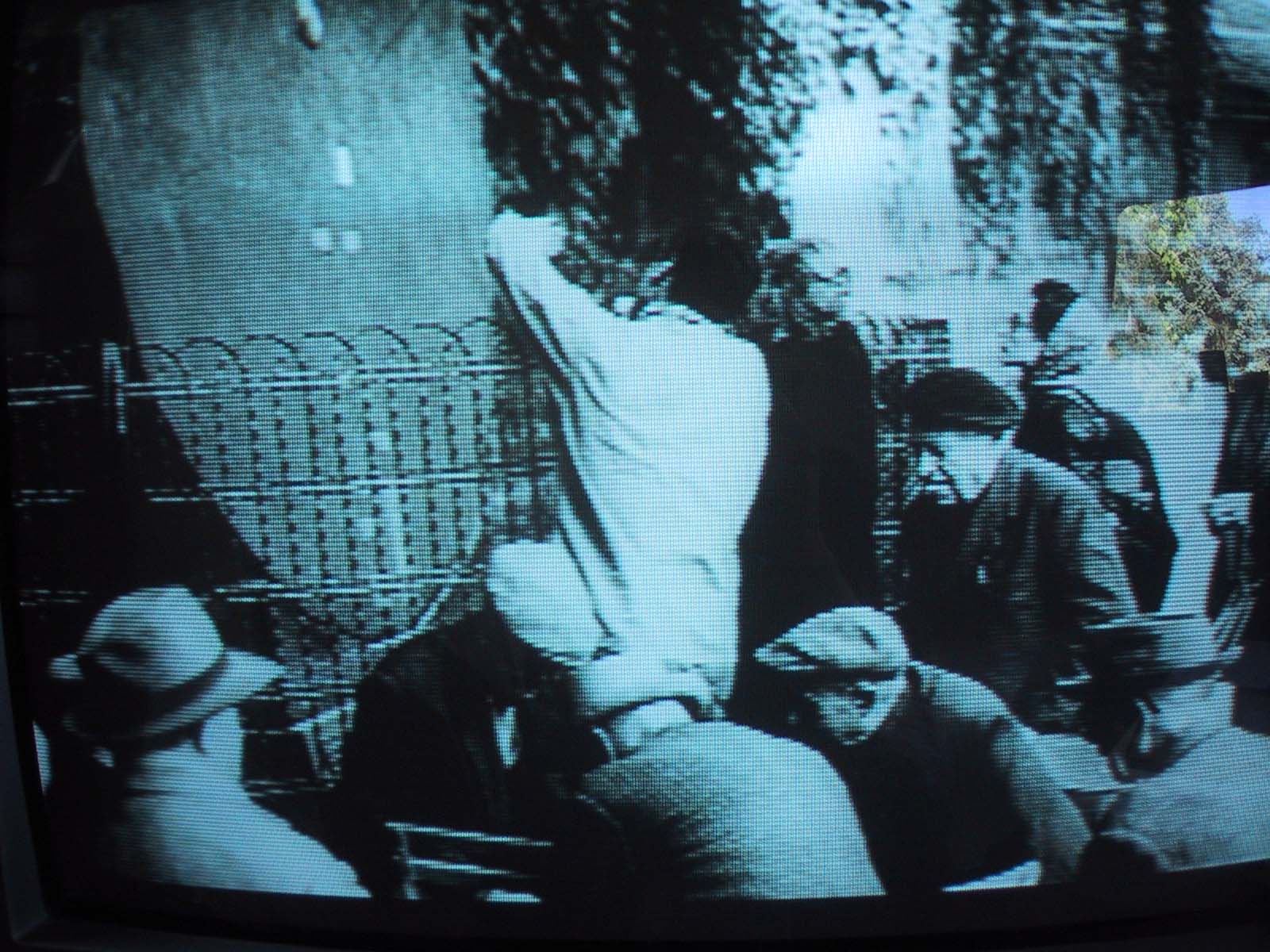
Sequoia scene in La Jetée (1962)
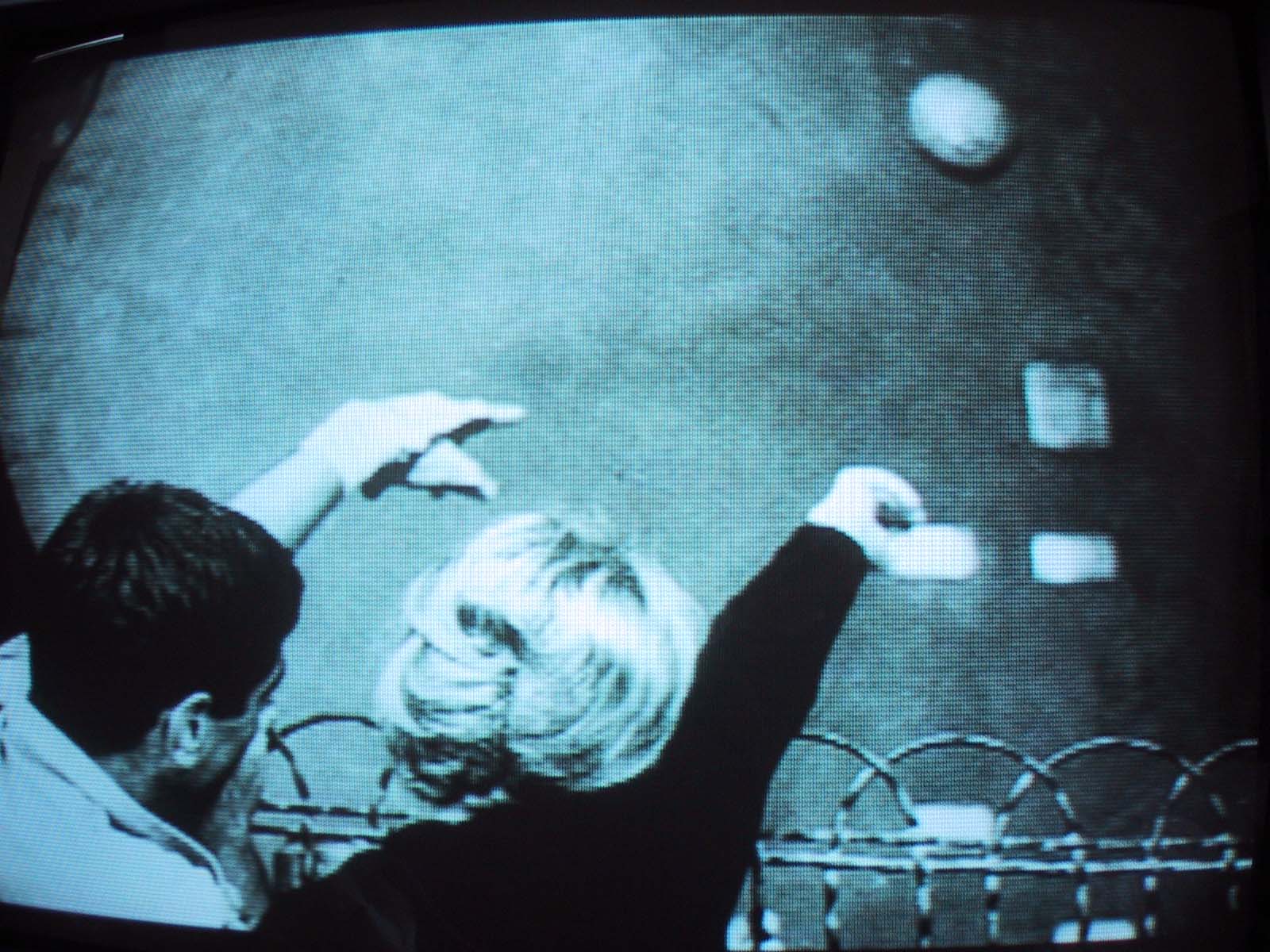
– an homage to Hitchcock’s Vertigo (1958)
They walk. They look at the trunk of a sequoia tree covered with historical dates. She pronounces an English name he doesn’t understand. As in a dream, he shows her a point beyond the tree and hears himself say, “this is where I come from,” and falls back exhausted. Chris Marker La Jetée 1962
Counting the growth rings of a tree allows us to cycle backwards through time. If a tree is old enough we can travel further and further backward beyond our own time, until we are in a place of imagined memory.
The great conifers of North America’s west coast have become icons of time and sadly of modernity’s fascination and loathing of beings that might outlive us. Perhaps we think that by cutting the oldest trees down, we can somehow stop time and by putting their mute stumps in our museums, assert our dominance over it. What is such a tree after all but a very large, very slow clock, inexorably marking off each passing year with a new ring? For some, it might be too much to contemplate that one day the time of our own death will be fixed – just another spot in an expanding continuum of cells, within the trunk of some giant, whispering evergreen.
Hitchcock uses the sequoia tree as a trope for memory in his (1958) Vertigo. Mackenzie Wark, in his fascinating essay on vectoral cinema, asserts that in Vertigo,
the sequoia tree is to time what moving pictures are to space.
Wark goes on to describe:
In one of Hitchcock’s strangest scenes, Kim Novak, who is playing Judy, who is playing Madeleine, who is playing Carlotta, looks at the cross section of an ancient sequoia tree and pinpoints the rings in the wood when she, Carlotta, was born and died. These trees, she says, are “the oldest living things”. Scotty, played by James Stewart, explains their name. It means, “always green, ever living.” “I don’t like it”, retorts Madeleine, or maybe Judy. “Why?” Scotty asks. “Knowing I have to die”, says Judy, as Madeleine, possessed by the dead Carlotta. Or maybe its Kim Novak who says this. Or maybe Hitchcock.
Chris Marker riffs on Vertigo in his amazing (1962) film La Jetée in which the protagonist actually travels *backwards and forwards* through time from a post apocalyptic Paris “rotten with radioactivity” and at one point, poignantly tries to use a sequoia’s cross section to explain to the love of his *past* life, his achingly tragic *chronosthesia*
Sadly, filmmakers have been trying to remake Marker’s magic and essentially unrepeatable film again and again and they inevitably fail, the fragile aura somehow evaporating under the glare of transparent intentions. A case in point is Eternal Sunshine of the Spotless Mind, the latest Jim Carrey vehicle. While competently acted, it is kind of *dumb*, not in an absolute sense, as it is in fact quite cerebral by Hollywood standards, but *dumber* than La Jetée, on which it seems quite clearly to have been based. In Spotless Mind both protagonists opt to have the memories of their love affair artificially erased. At the last minute, the Jim Carrey character has a change of heart and tries to abort the procedure from within his own subconscious. The result is a rapid race though his own memory, in which he literally tries to outrun the neural evaporation of his recent past. Spotless Mind’s borrows heavily from La Jetee’s notion of the emergence subterranean, gray market neural re-programming services, allowing the protagonist with his deep and overriding sense of anomie, to journey back in time and memory to reconcile a lost relationship. But Spotless Mind is a much less elegiac and more manic kind of film, irreconcilably freighted with ego and lacking the cool post-apocalyptic resignation of La Jetee. It almost seems that director Michael Gondry may have somehow erased his own memory of having seen Marker’s film. At least Terry Gilliam cops to the source material in his (1995) 12 Monkeys . Here Bruce Willis is sent back through time to stop the outbreak of a catastrophic pandemic and winds up being put in a mental hospital when he realizes he has been sent back slightly too far. The problem with this film is (well) Bruce Willis, but Gilliam’s overt, (albeit slightly ham-fisted) homage to La Jetée, at least seems to have steered audiences to seek out the original. And, most disappointingly for me, both Gilliam or Gondry fail to cast the venerable sequoia. Of course the sequoia itself has a way of burrowing itself into my subconscious. The saddest sequoia I ever encountered, was housed in a peculiar, dusty old private museum on the Canadian side of Niagara Falls. Instead of historical dates, the massive stump was completely covered with the *business cards* of museum visitors, many of them disgustingly affixed with wads of used chewing gum. It’s a tragic image that I have never quite gotten out of my head. . . Was it the last shrine to Capitalism? In a perhaps futile gesture of atonement for my species, I recently planted a couple of sequoia saplings in the rain forest outside my house, albeit well north of their Californian home. They seem to be growing quite lustily and one can only hope they will in the fullness of time be allowed to gain the girth of their ancient brethren, perhaps to enthrall some future, more enlightened generation, able to appreciate them in life rather than in death.
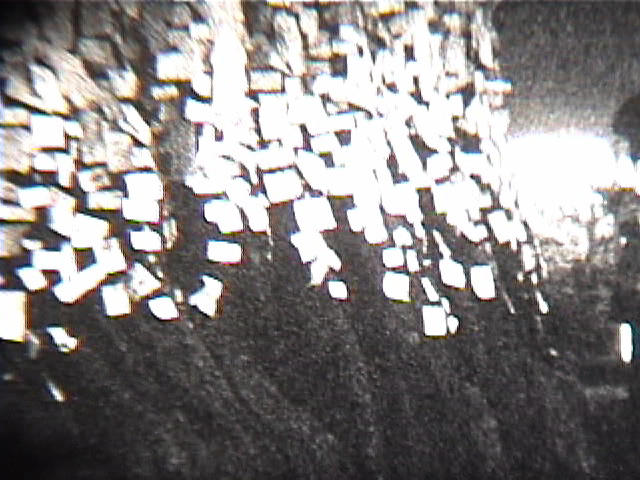
sequoia stump, gum and business cards
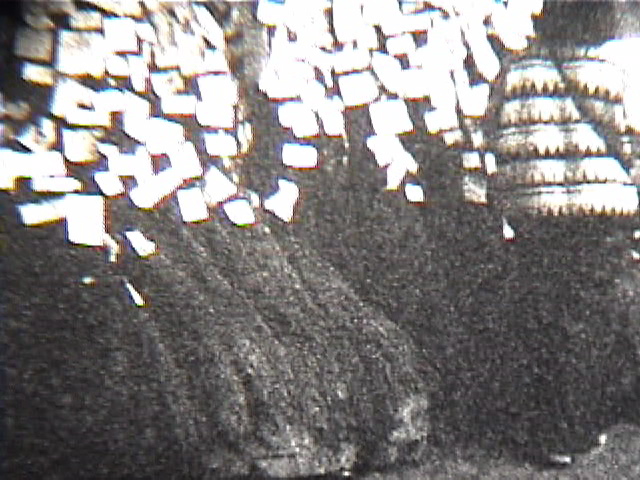
-Niagara Falls Museum circa 1989
The same museum had some other equally horrific displays which where at once fascinating and deeply disturbing. There was, for example, a complete skeleton of the now largely extirpitated Atlantic Right Whale, on which every bone had been covered with graffiti. I had with me a small super 8mm camera, which I had purchased at a thrift store, loaded with about 3 minutes worth of film. I tried to capture all of the demented images, wildly panning through the exhibit halls, to prove to myself that I wasn’t dreaming, and somehow to later understand what I had just seen. The resulting, haunting, individual frames of black and white movie film, are all that remain for me of this brief visit. I had the overriding (and as it later turned out *correct* sense) that this old museum wouldn’t last much longer, itself a relic of a vanished age. Among the dusty vitrines lay a remarkable collection of Egyptian and aboriginal North American mummies, which apparently been at one time been commonly offered for sale as freak show curios. Perhaps because of the decades of indignity to which they had been subjected, the mummies, gave off a palpable, strangely beautiful aura of anger. One of them had a mouth fixed in the rictus of a scream which no doubt could be heard through all eternity.
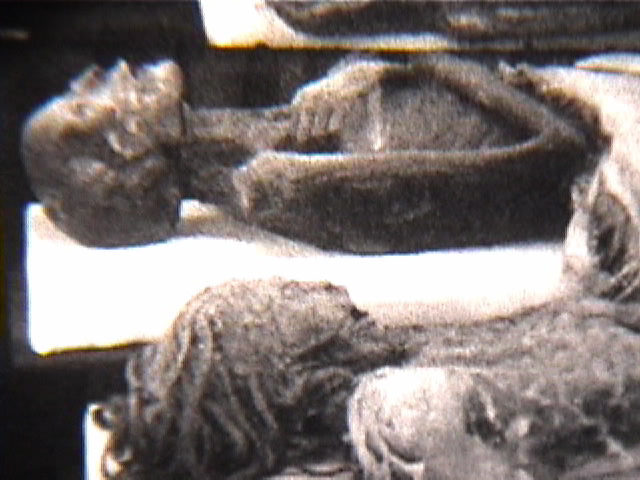
Display of mummies
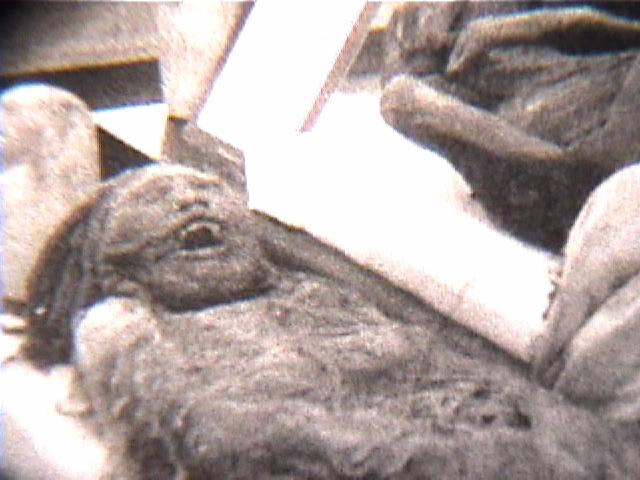
– Niagara Falls Museum, circa 1989
An equal right to anger should be accorded the ancient bristlecone pine, probably *the oldest tree on earth*, which an intrepid and apparently guileless scientist recently cut down to *see how old it was*. PBS ran a documentary about these ancient trees ( at least the ones that are left), the locations of which have now thankfully now been largely made secret, to prevent further such acts of ad hoc public edification. PBS’s accompanying website has a nice VR panorama of the bristlecones *in situ*, whiling away the aeons in their bleak windswept alpine saddles, dreading perhaps most of all not the blast of storms or the heat of the withering sun, but the sound of an intrepid scientist scrabbling up the mountain. . .
Other *old* things to have caught my eye recently was this report on earth’s earliest wildfires, dating back to the Silurian era, barely after the appearance of the first terrestrial plants and just after the second most devastating mass extinction event in earth’s history, which had wiped out 60% of all marine species, planet wide. Apparently, scientists discovered some impossibly old charcoal, which formed even though the atmosphere at that time had significantly less oxygen than does ours today, which meant it was harder for fires to start. Even more fascinatingly, the scientists found a quantity of very old, very charred millipede feces, in the same (er) *deposit.*
Oh, and for those of us worried about the seemingly pervasive rise of Alzheimer’s disease in the *old* and the not-so-old, a recent book, Dying for a Hamburger, draws some interesting links between the occurence of Alzheimer’s and the practice of *batch processing* beef. CBC’s The Current, ran an interesting interview recently with the book’s author, Toronto coroner Dr. Murray Waldman, who noted the curious rarity of Alzheimer’s in countries such as India, (where modern factory farming and meat processing practices haven’t yet been systemically implemented), compared to North America and Western Europe, (where they have.)
BTW, I have left the mossy margins of my rainforest island for a short *field* trip and I am on a plane hurtling toward *old* New York right now, and (provided we miss any tall buildings on the way down), I will be blogging from there for the next few weeks.
Stay tuned . . .
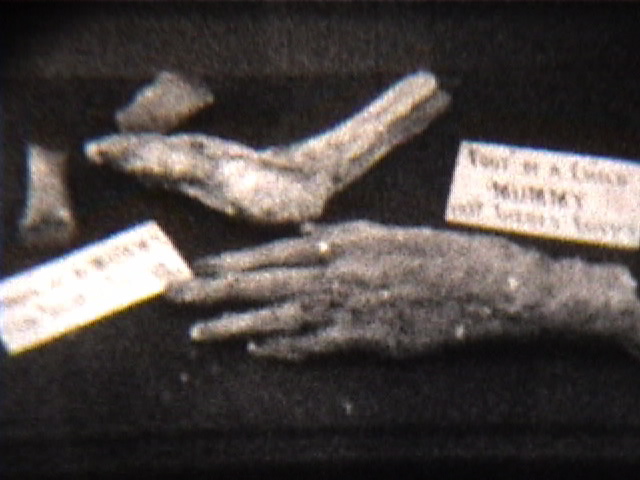
Mummified hands and feet of a child, Niagara Falls Museum, circa 1989




Vaguely part of the same terrain is Phillip K Dick’s short story “We can remember it for you wholesale”, which was also the inspiration for “Total Recall”.